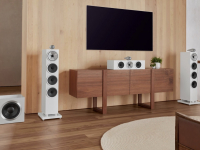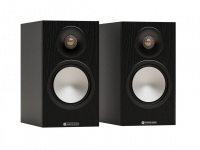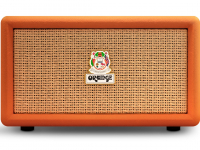
A deep dive into Chord’s latest standalone DAC.
First impressions
The packaging gives an idea of the quality to come. The Qutest comes in the top of a robust box, and below is a drawer containing the accessories. Despite its small dimensions the Qutest is deceptively heavy – not surprising as it is machined from a single billet of aircraft grade aluminium alloy. There are only two controls (which is two more than on my old Chord Qute EX), plus the trademark viewing lens. More about these later.
 Plugging things in is a doddle. For an initial trial I connected the optical input to a Cambridge Audio CXN via a standard C-lite cable, and the RCA-Phono output to a Roksan Caspian M2 amplifier using Chord Clearway cables. The speakers used were Focal 926 floorstanders. Before I did any listening, I allowed the whole setup to warm up for a few hours. I selected the correct input (green glow on the select button), left the filter setting as it was (green) and settled back to listen.
Plugging things in is a doddle. For an initial trial I connected the optical input to a Cambridge Audio CXN via a standard C-lite cable, and the RCA-Phono output to a Roksan Caspian M2 amplifier using Chord Clearway cables. The speakers used were Focal 926 floorstanders. Before I did any listening, I allowed the whole setup to warm up for a few hours. I selected the correct input (green glow on the select button), left the filter setting as it was (green) and settled back to listen.
Listening
I started by playing one of my standard test tracks, “Limehouse Blues”, which is the first track of Jazz at the Pawnshop. This is sampled from an analogue tape at 88.2kHz, 24 bit, and is one of the best recorded Jazz albums around. I was immediately struck by the sense of atmosphere at the opening, where the background sounds of a jazz club are more immediate than I have ever heard before. Then the opening riff on the drum kit sounds crisp and clear, then Arne Domnerus’ clarinet as sweet as a nut. Shortly after I found my feet tapping of their own volition – always a sign that the equipment is getting the timing right. In truth, I more or less expected that, as my Qute EX has a similar effect, but this seems a step beyond.
 Changing the filter settings had very subtle effect, but overall I found that the green or white settings were best. This does not apply equally to all tracks, however. Genesis’ “Selling England by the Pound” and Supertramp’s “Breakfast in America” both sounded better with the warm, roll-off filter applied. This applied both to CD quality and 96kHz 24-bit files. As I say, the differences were very small and your mileage may vary. All the qualities noted in the Jazz at the Pawnshop album was also in evidence here, plus plenty of power in the more dynamic sections of the music.
Changing the filter settings had very subtle effect, but overall I found that the green or white settings were best. This does not apply equally to all tracks, however. Genesis’ “Selling England by the Pound” and Supertramp’s “Breakfast in America” both sounded better with the warm, roll-off filter applied. This applied both to CD quality and 96kHz 24-bit files. As I say, the differences were very small and your mileage may vary. All the qualities noted in the Jazz at the Pawnshop album was also in evidence here, plus plenty of power in the more dynamic sections of the music.
 Turning to Classical and CD quality Beethoven’s Triple Concerto started with an utterly believable image of the orchestra; the soundstage both wide and deep. The entry of the soloists revealed true tone colours and excellent balance with the orchestra. This recording can sound rather airless and dry, but there was no evidence of that here. A final test with Mahler’s Resurrection Symphony, with the Budapest Festival Orchestra conducted by Ivan Fischer (88.2 kHz, 24 bit) confirms my in my resolve. My ears are still ringing from the final tumultuous climax.
Turning to Classical and CD quality Beethoven’s Triple Concerto started with an utterly believable image of the orchestra; the soundstage both wide and deep. The entry of the soloists revealed true tone colours and excellent balance with the orchestra. This recording can sound rather airless and dry, but there was no evidence of that here. A final test with Mahler’s Resurrection Symphony, with the Budapest Festival Orchestra conducted by Ivan Fischer (88.2 kHz, 24 bit) confirms my in my resolve. My ears are still ringing from the final tumultuous climax.
Summary
Quite simply, this is the best DAC I have heard, outperforming others at two or three times the price. It might seem daft to call a DAC at this price point an out-and-out bargain, but it is true. A great deal of home listening will follow. I am buying one.
Why not pop in to your local Richer Sounds today and hear this incredible DAC in action?
Click here to learn more about the Chord Qutest
Author: Alan, Preston store





